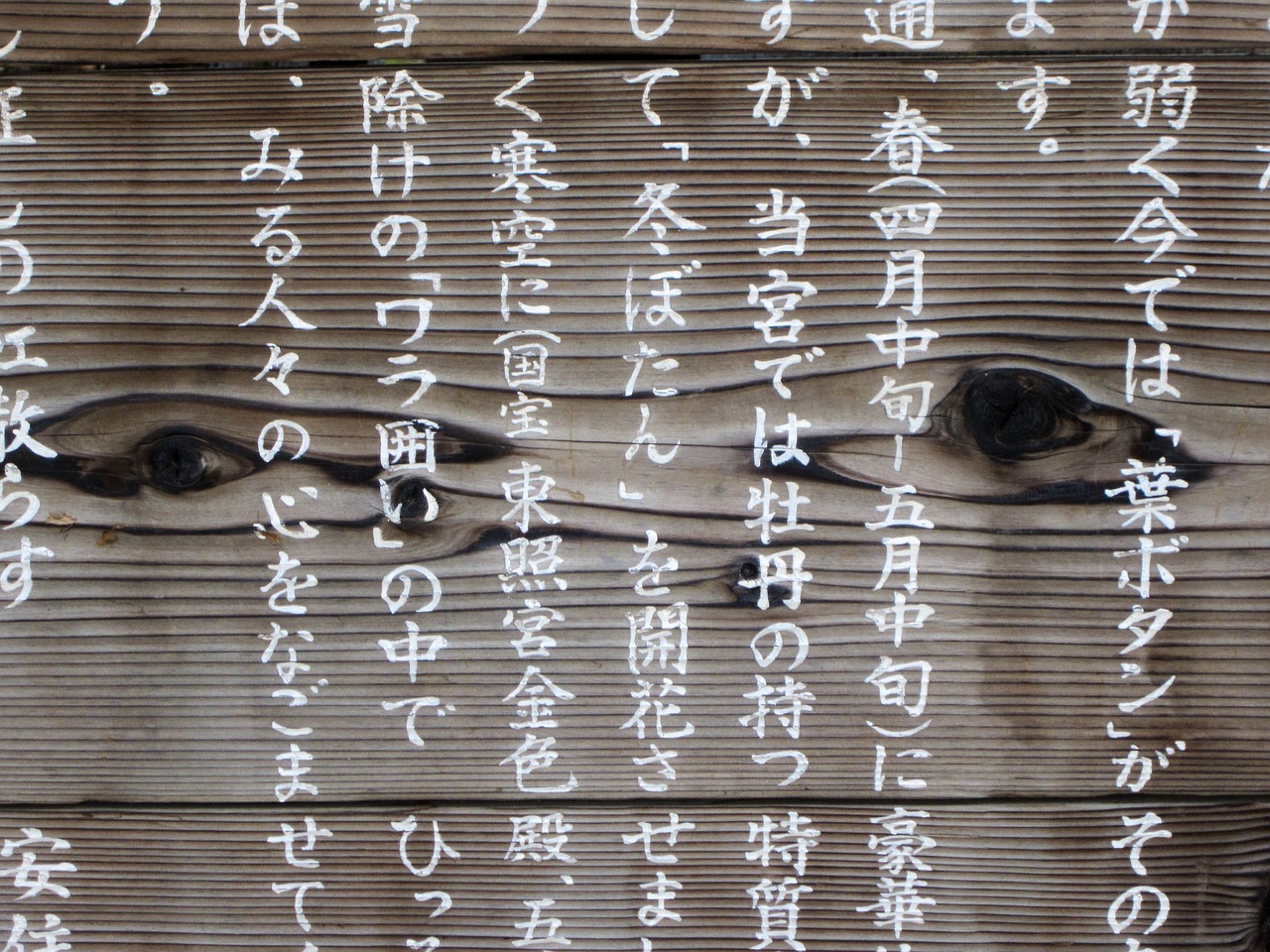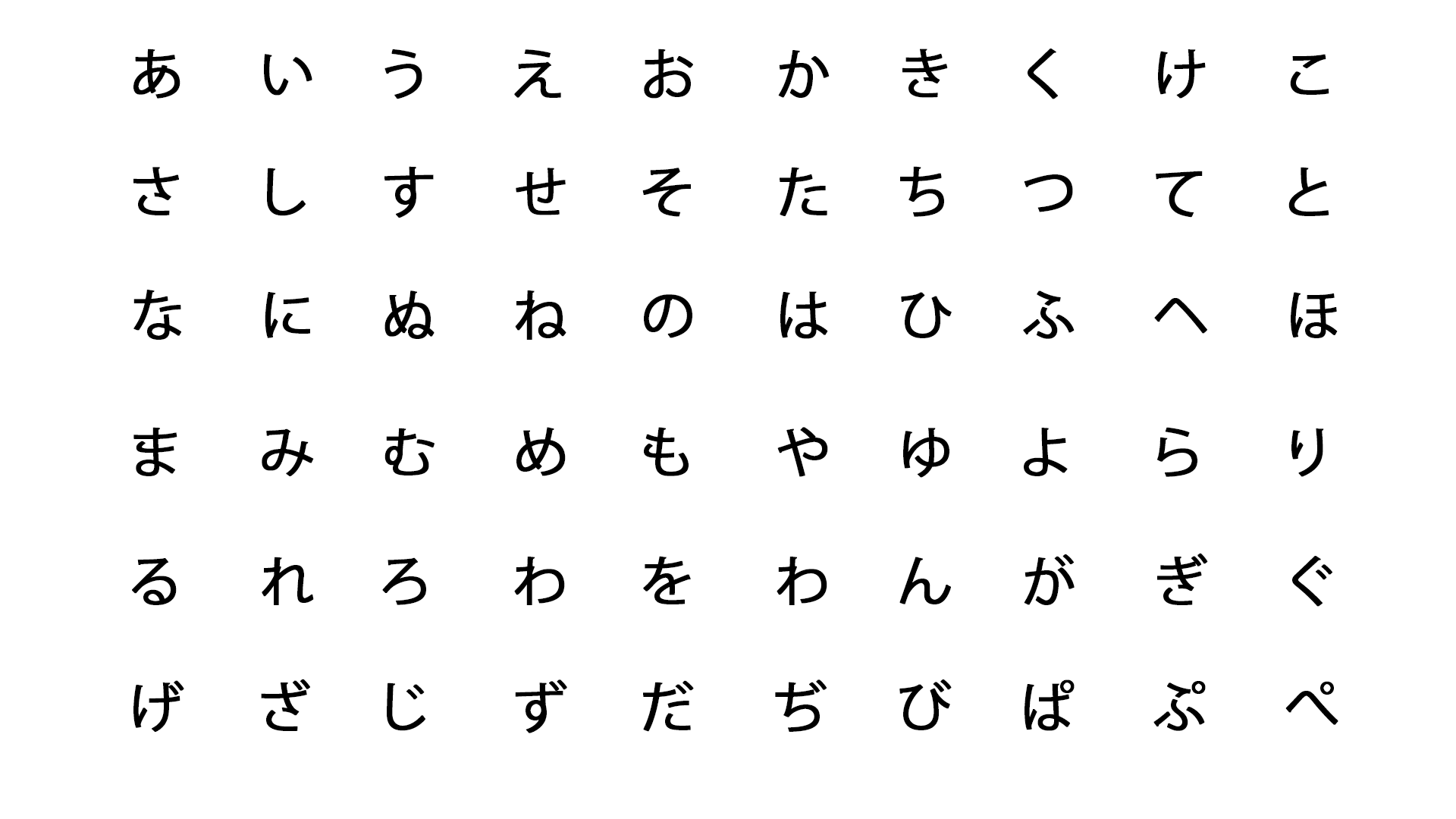- Content Overview
- Basics of Japanese Characters: Katakana, Hiragana, and Kanji
- What is Hiragana and what is Katakana?
- Start with Hiragana
- Next, move on to Katakana—first, review your Hiragana knowledge.
- Learning Materials for the Characters Hiragana and Katakana
- Understand the Basic Grammar of the Japanese Language
- The most important thing when learning: Use Japanese – 8 Tips for Learning Japanese.
Content Overview
- Starting with Japanese: Begin with Hiragana and Katakana, the two fundamental writing systems of the Japanese language, to build a solid foundation.
- Learning Resources: Free online tools like Duolingo or Japanese podcasts are great for learning the language interactively and flexibly.
- Effective Learning Strategies: Daily study routines and the use of flashcards help you internalize vocabulary and grammar in a sustainable way.
- Motivation Through Practice: The key to success is regular practice, whether through writing, speaking, or watching Japanese movies to strengthen your language skills.
Basics of Japanese Characters: Katakana, Hiragana, and Kanji

The Japanese writing system is a fascinating combination of different scripts, each with its own rules, functions, and origins. It mainly consists of the two phonetic syllabaries, Hiragana and Katakana, as well as the Chinese characters known as Kanji.
Hiragana (平仮名) and Katakana (片仮名) are the two syllabaries collectively known as Kana. Hiragana is mainly used for grammatical endings, particles, inflectional endings, and Japanese words that cannot be written in Kanji. Katakana, on the other hand, is often used for foreign words, loanwords from other languages, as well as names of animals, plants, and certain technical terms. Each Kana alphabet consists of 46 basic characters.
Kanji (漢字) are the Chinese characters adopted into the Japanese writing system. They represent entire words or units of meaning and are used for nouns, verbs, adjectives, and some adverbs. Kanji are more complex and often have multiple readings and meanings, making them more challenging to master. In the Japanese writing system, there are thousands of Kanji characters, with Japanese students learning around 2,000 to 3,000 throughout their schooling.
When reading Japanese texts, you inevitably encounter a mix of Hiragana, Katakana, and Kanji. While Kanji convey the meaning of a word, Hiragana and Katakana help to understand the grammar and pronunciation and to grasp the context.
For those traveling to Japan or learning the Japanese language, it is advisable to first become familiar with the two Kana alphabets, as they form the foundation for reading and understanding Japanese texts. Mastering Hiragana and Katakana is an important first step before tackling the challenge of learning Kanji.
What is Hiragana and what is Katakana?

Hiragana (平仮名) and Katakana (片仮名) are both syllabaries in the Japanese writing system, collectively known as Kana. They are used to phonetically write the Japanese language, with each character representing a syllable. Here are their differences:
Hiragana
- Hiragana is one of the two basic syllabaries of the Japanese language.
- It consists of 46 characters, each representing a syllable.
- Hiragana is mainly used for grammatical endings, particles, inflectional endings, and Japanese words that cannot be written in Kanji.
- It is often used to indicate the pronunciation of words, especially when Kanji are used whose reading is not obvious.
- Hiragana has a softer and more curved form, which is why it is often taught first and used by children.
Katakana
- Katakana is also a syllabary of the Japanese language.
- It also consists of 46 characters, each representing a syllable, and generally corresponds to the same sounds as Hiragana.
- Katakana is often used to write foreign words, loanwords from other languages, as well as names of animals, plants, and certain technical terms.
- It is also used to emphasize stress and accent, especially in advertising text or comic dialogues.
- In contrast to Hiragana, Katakana characters have a more angular and straight-lined form.
Start with Hiragana
- Hiragana is one of the two basic syllabaries of the Japanese writing system.
- It consists of 46 characters, each representing a syllable.
- Hiragana is mainly used for grammatical endings, particles, inflectional endings, and Japanese words that cannot be written in Kanji.
Step 1: Learn the basics of Hiragana pronunciation
Before you start learning Hiragana characters, it’s important to understand the correct pronunciation of Japanese sounds. Make sure to listen to the syllables carefully and repeat them to improve your pronunciation.
Step 2: Learn the Hiragana Characters
Start with the basic Hiragana characters by looking at them individually and memorizing their sound and shape. There are various resources like textbooks, online courses, or apps that can help you learn. Divide the Hiragana characters into smaller groups and learn them gradually to avoid feeling overwhelmed.
Step 3: Practice Writing and Reading Hiragana
After learning the Hiragana characters, practice writing them by repeating them multiple times. Use worksheets or writing exercises to improve your handwriting. To practice reading, read Japanese texts aloud and try to identify the Hiragana characters.
Step 4: Deepen Your Knowledge and Practice Regularly
Deepen your knowledge of Hiragana by practicing and reviewing regularly. Use flashcards or other learning aids to train your memory. Look for opportunities to apply your Hiragana skills by reading or writing Japanese texts.
Step 5: Continue Your Learning Journey
After mastering the basics of Hiragana, you can expand your learning experience by studying Katakana and Kanji. Stay patient and consistent in your practice, as learning a new writing system requires time and dedication.
Next, move on to Katakana—first, review your Hiragana knowledge.

Before you start learning Katakana, make sure you have mastered the basics of Hiragana, as Katakana is based on similar sounds. If necessary, review the Hiragana characters and their pronunciation to ensure you are ready for the next step.
Step 1: Learn the Katakana Characters
Start with the basic Katakana characters by memorizing their shape and pronunciation. Again, use various learning resources such as textbooks, online courses, or apps to learn Katakana. Divide the Katakana characters into smaller groups and learn them gradually to avoid feeling overwhelmed.
Step 2: Practice Writing and Reading Katakana Characters
Continue your learning practice by practicing writing the Katakana characters. Use worksheets or writing exercises to improve your handwriting. To practice reading, read Japanese texts aloud and identify the Katakana characters to strengthen your reading skills.
Step 3: Deepen Your Knowledge of Katakana Characters and Practice Regularly
Consolidate your knowledge of Katakana through regular practice and review. Use various learning strategies such as flashcards or learning games to deepen your understanding. Look for opportunities to apply your Katakana skills by reading or writing Japanese texts that include Katakana.
Step 4: Expand Your Language Skills with Kanji and Review Hiragana and Katakana
After mastering Katakana, you can further expand your language skills by focusing on other aspects of the Japanese language, such as grammar, vocabulary, and conversation. Stay committed and patient in your practice, as learning a new writing system takes time and perseverance.
After you have mastered Hiragana, Katakana, and the language itself, you can now move on to learning Kanji characters.
You can find books and learning materials here in our shop.
Learning Materials for the Characters Hiragana and Katakana
There are various materials for learning the characters and the Japanese language. I’ve listed the most common books and resources for you below. These are affiliate links from Amazon. If you purchase the materials through the link, I receive support from Amazon at no extra cost to you.
Books and Workbooks for Learning Hiragana and Katakana
Workbooks provide exercises and activities to reinforce what you’ve learned. They can be used alongside textbooks or on their own. Here are the three most popular workbooks for learning Hiragana and Katakana characters.



Books and Workbooks for Learning Kanji
For Kanji, the following three books are recommended for learning the Kanji characters. Especially with Kanji, it’s all about learning, learning, reviewing, and learning again.



Japanese Grammar and Vocabulary for Beginners
Japanese grammar is essential. Here, I’ve listed three books that make learning vocabulary and grammar for Japanese beginner-friendly.



Understand the Basic Grammar of the Japanese Language
Japanese grammar differs in many ways from the grammar of other languages. Understanding the basic Japanese grammar is essential for acquiring the language and forming correct sentences.
Japanese Sentence Structure
An important aspect of Japanese grammar is sentence structure. In Japanese, the basic sentence structure often follows the Subject-Object-Verb (SOV) pattern. For example, in Japanese, you would say: “Watashi wa ringo o tabemasu” (I eat an apple). Understanding how this sentence structure works is essential for forming clear and understandable sentences.
Another important point is verb conjugation. In Japanese, verbs change their form depending on tense, level of politeness, and other factors. For example, the verb “taberu” (eat) changes according to the level of politeness and tense. Understanding the different verb conjugations is essential to use them correctly.
Nouns, Pronouns, Adjectives, and Adverbs
Nouns, pronouns, adjectives, and adverbs also play an important role in Japanese grammar. These parts of speech have specific functions in a sentence and can vary depending on the context. It is important to understand their usage and different forms in order to make correct and precise statements.
To understand basic Japanese grammar, regular practice is essential. By reading, writing, listening, and speaking in Japanese, you can improve your grammar skills and apply them in various contexts.
Learn the Japanese Language with Pictures and Sentences
There are various ways to learn and reinforce the Japanese language. The motto is: if it’s fun, learning comes easily. On this topic, I’ve listed 8 ways to make learning effective.
Picture Dictionaries: Picture dictionaries are great resources for learning Japanese vocabulary visually. They include images alongside the words, helping you understand and internalize their meanings.
Flashcards: Create your own flashcards with Japanese words or sentences on the front and their translation or meaning on the back. Add pictures to deepen understanding and promote visual learning.
Picture Stories: Create or use picture stories to illustrate scenarios or everyday situations in Japanese. Use images to support the action and add sentences to enhance understanding.
Online Resources: There are many online platforms and apps that provide visual materials for learning Japanese. Some offer picture cards with sentences and vocabulary, while others provide interactive games and activities with visual elements.
Learning Videos and Images: Look for learning videos or images on platforms like YouTube or Pinterest that combine Japanese sentences and vocabulary with visuals. These videos can show everyday situations, dialogues, or stories to make learning easier.
Study Groups and Language Partners: Join a study group or find a language partner to learn together with others. You can use visual materials together to practice conversations and support each other.
Children’s Books: Japanese children’s books are an excellent way to learn simple sentences and vocabulary in a fun and visual way. The pictures help with understanding and make learning playful.
Calligraphy: Try learning Japanese characters through traditional calligraphy. Writing the characters can help you memorize their shapes better, and adding images can further support your learning.
Review Often, but Skip the Unnecessary
When learning a new language, repetition is key. Regular review helps train your memory and reinforce what you’ve learned. This is especially true for learning Japanese, which can be challenging due to its unique writing system and grammar.
It is important to schedule time daily for learning Japanese and to regularly review the content you have already learned. By practicing the vocabulary, grammar rules, and expressions repeatedly, they will gradually move into your long-term memory and become easier to recall.
However, it is also important to avoid unnecessary distractions when learning Japanese. Focus on those aspects of the language that are relevant to your current learning goals. Avoid getting lost in details that are not essential for everyday use.
For example, you can focus on everyday vocabulary, useful phrases, and basic grammar rules that help you express yourself in daily life in Japanese. Avoid focusing too much on rare or specialized vocabulary unless it is relevant to your specific learning goals.
An effective approach is to create a structured study plan that includes regular review sessions while minimizing unnecessary distractions. Set clear goals for your Japanese learning and focus on the areas that will help you achieve those goals.
The most important thing when learning: Use Japanese – 8 Tips for Learning Japanese.
Everyday Conversations: Try to have short conversations in Japanese every day, whether with friends, family, or language partners. Practice applying the vocabulary and grammar structures you’ve learned.
Diary Writing: Keep a diary in Japanese where you write about your daily experiences, thoughts, and feelings. This not only improves your writing skills but also helps you express your own thoughts in the language.
Practice Listening Comprehension: Listen to Japanese music, podcasts, movies, or TV shows and try to understand the content. Pay attention to pronunciation, intonation, and sentence melody to improve your listening skills.
Language Outings: Take every opportunity to practice your language skills in real-life situations. Visit Japanese restaurants, shops, or cultural events and try to order, ask questions, or have conversations in Japanese.
Develop Reading Comprehension: Read Japanese books, newspapers, magazines, or online articles and try to understand the content. Start with simple texts and gradually work your way up to more challenging material.
Language Partnerships: Look for language partners or tandem partners with whom you can regularly communicate in Japanese. Discuss various topics and help each other improve your language skills.
Language Courses and Workshops: Enroll in Japanese courses, language workshops, or conversation groups to receive structured learning and the opportunity to practice with other learners.
Talk to Yourself: Speak to yourself in Japanese to practice speaking and improve fluency. You can talk about different topics, answer questions, or simply express your thoughts out loud.